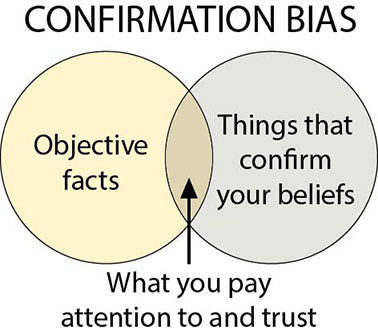Engaging critically with social media
Engaging critically with social media
From politics to pop music, social media is the way many people today learn what’s happening in the world. But anyone can share just about anything online. Before you repost or retweet, how can you be sure that what you’re reading isn’t fake news?
Thoughtful social media use
When we see or hear information that aligns with a belief we already hold, we generally don’t question it. Do you feel confident that a particular food, exercise, or supplement is full of health benefits? Then of course you’re going to trust a tweet claiming that it reduces your risk of cancer. Similarly, if you think a certain political party is plagued by corruption, you’re likely to believe a post saying one of their members was involved in a scandal.

Our tendency to trust information that supports what we already believe, and to ignore other facts and evidence, is called confirmation bias. Combine confirmation bias with an inflammatory or provocative social media post, and misinformation can spread rapidly. It’s always important to consider whether what you’re reading and seeing is factual, especially if you’re going to share it with your online community.
The SIFT method
The SIFT method is a set of four simple steps to help you determine whether something you are reading online is trustworthy.
SIFT stands for
- Stop
- Investigate the source
- Find better coverage
- Trace claims, quotes and media back to their original context.
These steps are all about understanding the source and context of the information, so that you can decide before you even read it whether it is valid and reliable.
 |
Stop It can be easy to get pulled into a post on social media or a provocative web site before doing any evaluation at all. This first step reminds you to pause and consider whether you know and trust the source of the information you’re reading. If you have any doubts, continue with the next steps. |
 |
Investigate the source Before you dig into an idea you find online, it’s helpful to know where it’s coming from. You’d probably want to know if the claims you’re reading about climate change are coming from a car manufacturer versus an environmental researcher, for example. If you’re not familiar with a website, look it up on Wikipedia for an overview. Knowing the expertise, perspective and agenda of the source can help you to better analyse and interpret the information provided. |
 |
Find better coverage If you’re trying to determine whether a claim is true or false, one of the best strategies is to find more information about the topic from trusted sources, a process called lateral reading. You can try to find the best, most authoritative source on a topic, or you can read multiple sources to see how different publications treat a claim you are trying to investigate. |
 |
Trace claims, quotes and media back to their original context Some people or organisations might not provide the whole picture of a topic, even if they are not intentionally trying to deceive you. Quotes can be taken out of context, claims distorted, and media altered or miscaptioned to support a particular perspective. Tracing these back to the original source allows you to see the original context and decide if the ideas have been presented accurately. |
Apply your understanding
Have a look at the content shared below and consider whether the information is factual and trustworthy. You can click the images to make them larger. Use the SIFT method to help with your analysis.
Attribution
This resource has been adapted from: Check, Please! Authored by: Michael Caulfield. License: CC BY: Attribution 4.0
